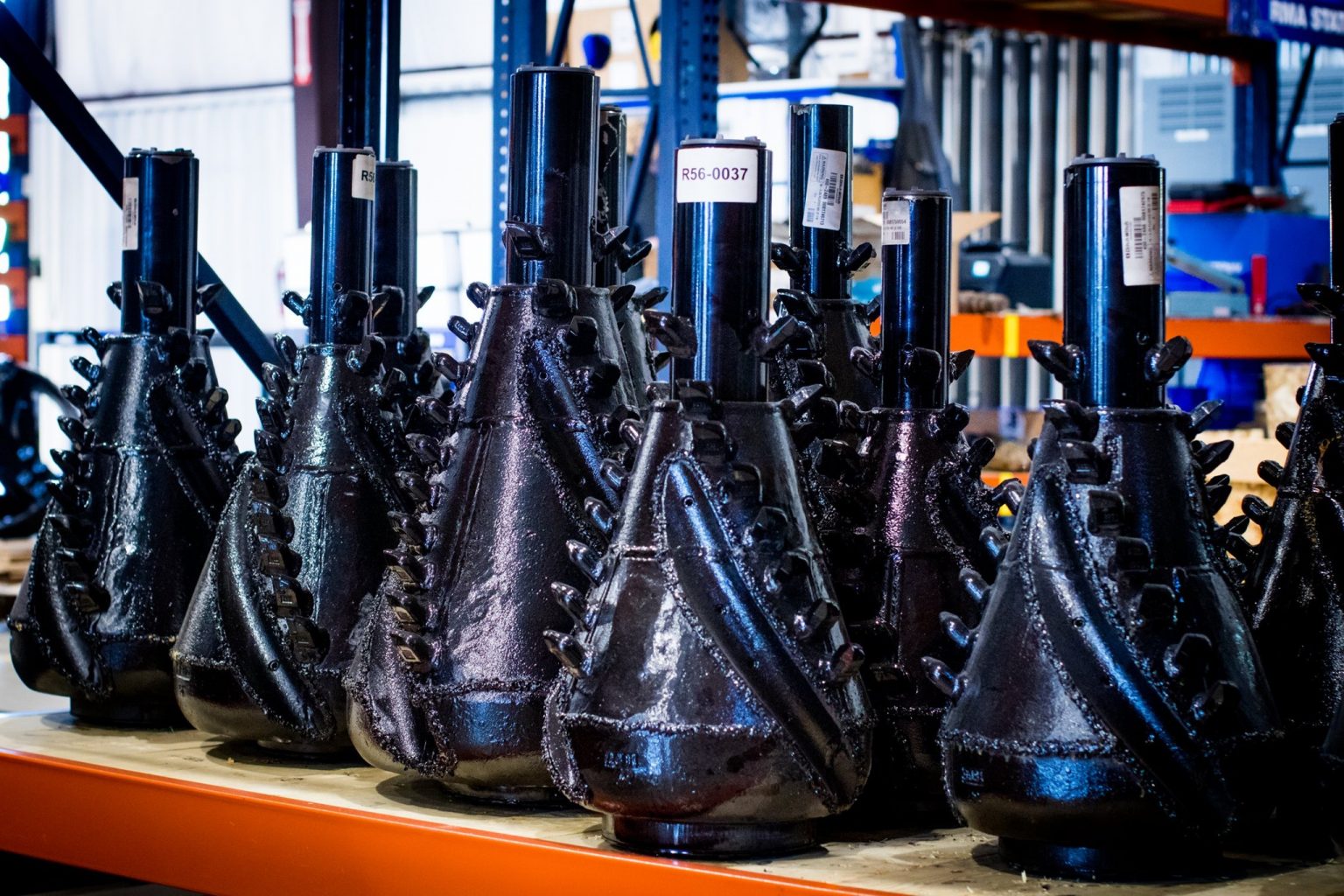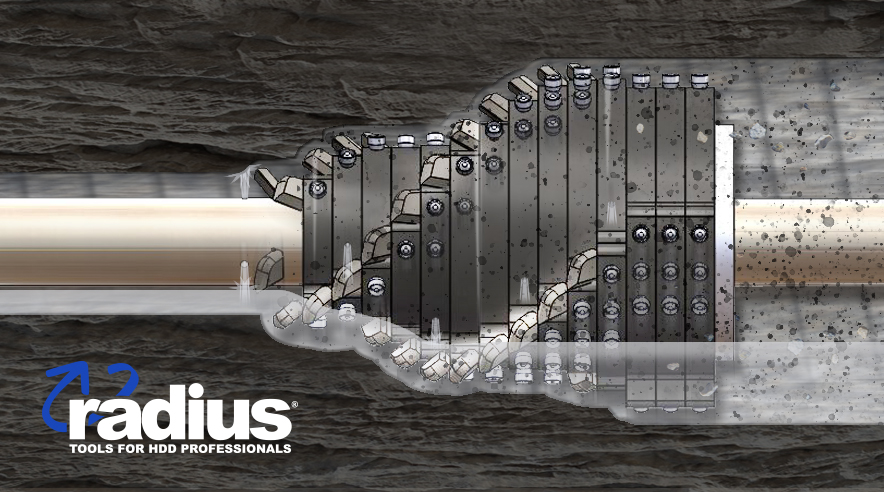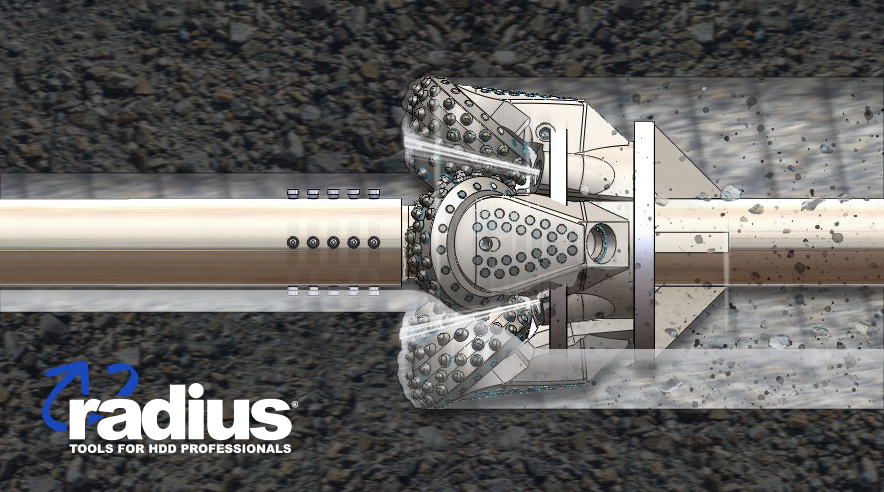Back Reaming.
Nov 19, 2019

After you’ve finished your pilot hole, the next important step for a successful bore is choosing the appropriate reamer. In some cases, the pilot hole finishes at the required bore hole diameter. But most of the time, they will need to be enlarged. Just like the pilot tool used before them, back reamers are also designed to perform in specific ground conditions. Selecting the right reamer for your ground conditions is key to completing a profitable project.
Keep in mind that the back reamer is not only designed to further cut and expand the pilot hole, but also to grind and suspend cuttings to help them efficiently flow out of the bore hole. A good reamer is designed to form and secure the hole for additional reaming or the pullback of product pipe. Below is a list of popular Radius HDD back reamers and which conditions they work best in.
- Fluted: For medium-to-tough soil conditions, including hard soil and chunk rock. Great all-around reamer and extremely durable. Adjustable fluid flow and typically field repairable as it wears. Flange mounded swivels or pulling eye options.
- Fly Cutter: For sand with cobbles, sandstone and hardpan. Lighter tool that offers great flow-through qualities.
- Stack Plate: A heavy tool ideal for hard ground and extreme conditions like hard rock, chunk rock and cobble. Great cutting and grinding properties. Flange mount swivel or pulling eye.
- Turbo: A versatile mixing tool that cuts and packs, making it ideal for caliche, sand, sandy loam, clay, and other unstable soils. Offers both cutting and compaction qualities.
- Barrel: Used to stabilize bore hole while increasing hole size, or swabbing bore hole prior to or during product pullback. Great soil compaction properties.
- Paddle Reamers: Low-weight design and low-resistance for more efficient fluid mixing. Designed with minimal surface area on cutters or wings to prevent “balling” of sticky soils and clay.
- Split Bit Hole Opener: For extreme conditions such as limestone, marble, granite and medium-to-hard shale. Design employs the geometry used in tri-cone bits which are very effective in solid rock formations. Fluid flow and RPM are critical to performance.
Another factor to consider when choosing a back reamer design is the taper of the cutting geometry. Generally speaking, the softer the ground conditions, the more the tool is “tapered.” Paddle and fluted reamers are good examples this – longer tapers are engineered to improve mixing and suspension of cuttings to evacuate the hole. As the ground conditions harden, “side cutting” reamers are still used, but the taper of the cutting blades is steeper, as is the case on many stack plate or fly cutter designs. In hard rock conditions, it’s easy to see the how design shifts to a “face cutting” reamer with no taper. The straight face cutting action allows better grinding and crushing of cuttings into a more floatable size.
Radius HDD offers a complete line of the highest quality tools to HDD professionals worldwide through our comprehensive online catalogue. To see how you can improve your HDD operations, call or text our HDD pros at 1-800-892-9114, email us at info@radiushdd.com or shop at radiushdd.com.


